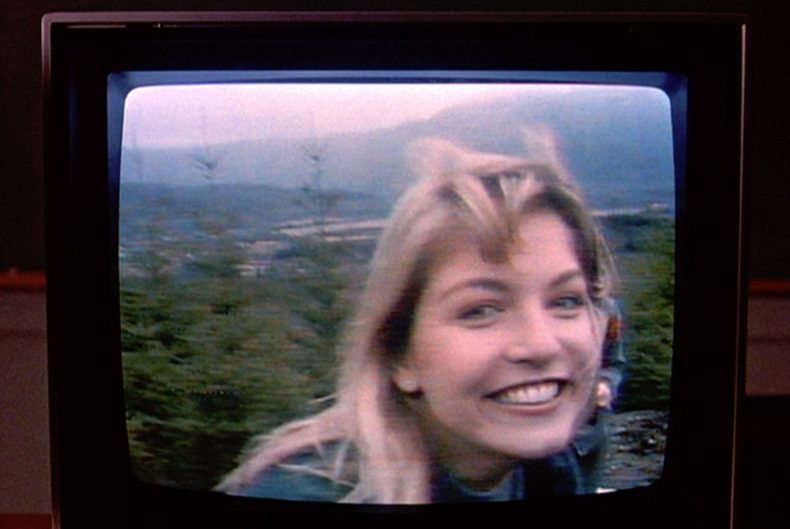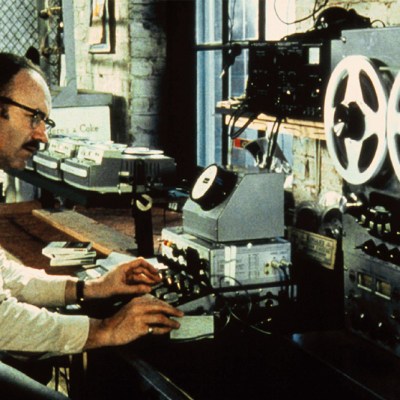For a while, when I was in college in the early nineties, I played in a rock band with a standing gig in a cafe in the basement of a high-rise dormitory. Every Thursday night, my bandmates and I would leave the dining hall and collect our instruments. We’d carry them to the venue, set up, do a soundcheck. At eight, we’d start playing, and we’d play for an hour, and then, a little before nine, our friends would leave. Sometimes they’d acknowledge us with a little nod, and we’d nod back in understanding as they hurried out the door. Some of them might come back an hour later, looking a little shell-shocked as we finished our set. We’d gaze into their eyes, trying to descry the secrets that had been revealed to them. What had they learned about Laura’s identical cousin? The Log Lady? Nadine’s curtains? What knowledge did they now harbor about the diary, the giant, the malevolent entity called Bob? We’d pack up our gear, haul it up to our dorm floor, rewind the VCR. It would be past midnight, we were filthy and exhausted, but we couldn’t sleep until we watched.
Later, I’d lie awake, my mind sorting and collating Twin Peaks’s indelible images: a printed letter, tweezed out from under a fingernail. A man, killed by an arrow, trapped in a giant chess pawn. A missing arm, returned to life as a dancing dwarf. A sinister reflection in a broken mirror. In the years to come, as I became a student of Lynch’s work, I’d add to this collection: a disembodied ear, nestled in the grass. A skeletal sapling harboring a ball of flesh. A miniature elderly couple driving a woman to suicide.
I don’t think there’s another director as screenshottable as Lynch. A painter as well as a film-maker, he understood the power of the still image, and let his camera linger where other directors might have cut away. He liked to make you look. Even though Mulholland Drive (2001) features one of the greatest acting performances of the 21st century – Naomi Watts’s staggering transformation from cheery Betty to tortured Diane – the turn we often remember as the most Lynchian is Patrick Fischler’s, as the terrified diner patron forced to confront his deepest fear behind the dumpster out back. That’s because he’s us – the viewer Lynch has captured, who can’t look away.
The intensity of these images of death and suffering has often led to reductive interpretations of Lynch’s work. In Blue Velvet (1986), in Twin Peaks, we see a small-town idyll undercut with violence; in Mullholland Drive, a bubbly starlet corrupted by addiction, misery, and vengeance. These contrasts can be misread as an expression of cynicism, with beauty and lightness and joy as mere surface, swept aside to reveal the deeper truths of horror and pain.
Laura Palmer, played by Sheryl Lee, appears in a video in the pilot episode of Twin Peaks. Photo: CBS Photo Archive/Getty Images; © 1990 CBS Broadcasting Inc. All Rights Reserved

Around the time I was lying awake, post-gig, pondering these images, I was trying to determine what kind of writer I was going to be. I had just begun my first creative-writing workshops, befriended my first fellow young writers, many of whom I didn’t understand. They were erudite, analytical, intellectually intimidating; they shunned sentimentality and vulnerability and reached for meaning in misery. But I didn’t know how to be edgy! My optimism and hunger for happiness kept getting in the way. I wanted a little house behind a picket fence; I wanted to fall in love. Lynch’s work gave me permission – I could embrace these things and be an artist, too. He wasn’t edgy, he was honest.
Because his camera didn’t just linger on the macabre. He also wanted to show you a conference table piled with doughnuts, a beautiful woman singing a sad song, the play of light on the trees, a good witch descending from a desert sun. The product of a stable childhood in a loving home, Lynch saw happiness and light as profundities equal to darkness and death. He truly believed in his young lovers; his pie and coffee; his soft-focus, suburban idyll. It’s just that, to him, these things were inseparable from dread. ‘There is goodness in blue skies and flowers,’ Lynch told Chris Rodley in Lynch on Lynch (2005), ‘but another force – a wild pain and decay – also accompanies everything.’
The commonest response to Lynch’s death that I saw online this past week was incredulousness: people just couldn’t believe he was gone. There’s an obvious irony to this reaction; he might be the most death-obsessed film-maker we’ve ever had! Somehow this made us believe, preposterously, that he’d get a pass. But while Lynch couldn’t achieve immortality, the work will last. In its idiosyncracy, the singularity of its vision and its unwillingess to give up its secrets easily, it seems to stand outside time and taste. It’s poised to teach future generations of artists what it taught me: that the strangest, most embarrassing, most sentimental, least parseable things in my heart were not only worth something, but the only unique value I possessed.



